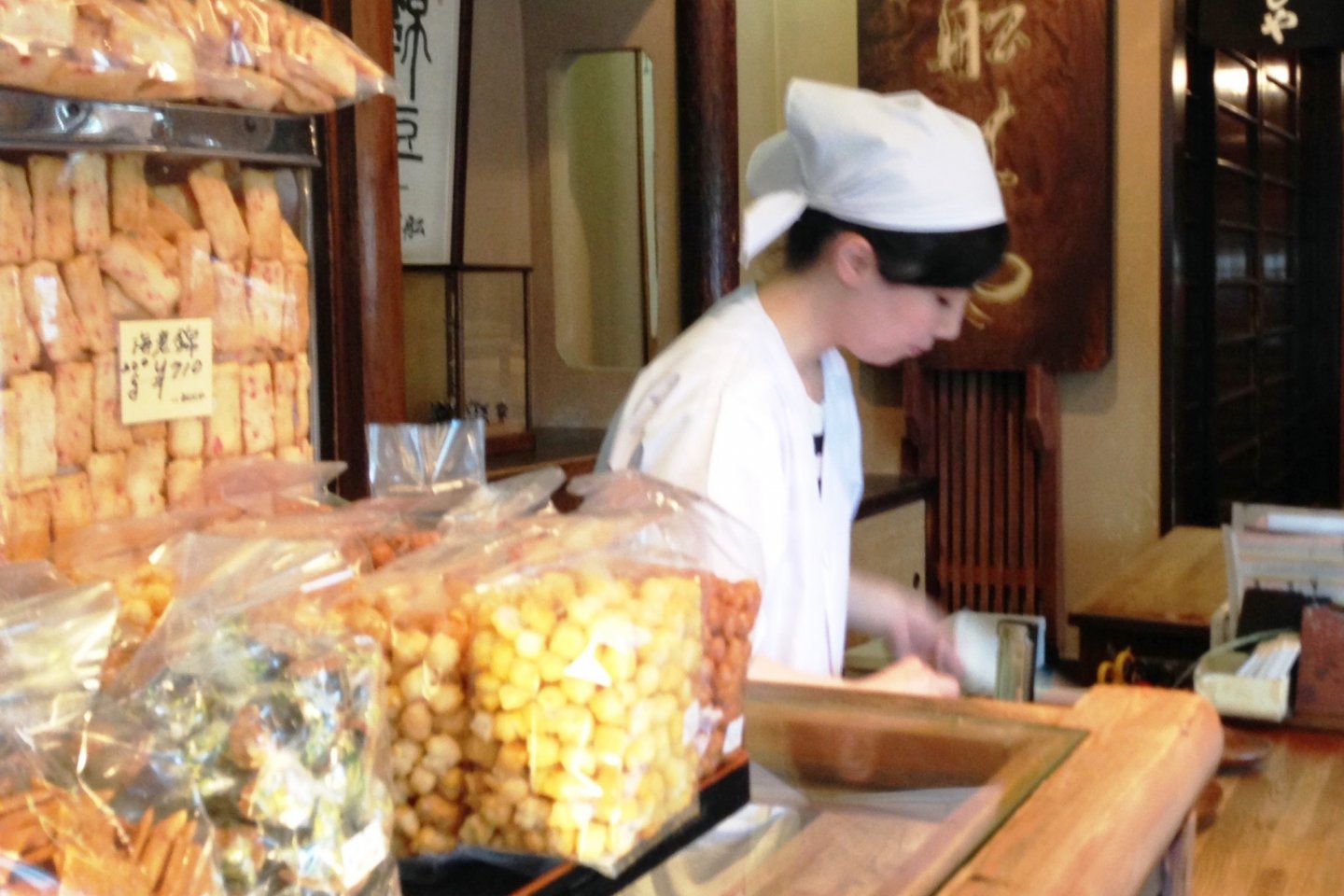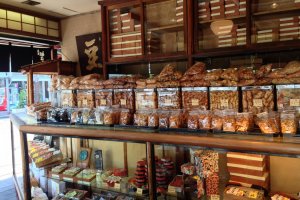Red, yellow, green, white and brown. You never thought rice crackers could be this colorful, but at Funahashiya’s traditional confectionery store, you are in for a treat. Actually I am referring to Goshiki-mame, literally five colors' beans that represent the elements of the earth. Occupying a special place in the hearts of generations of Kyotoites, it is a favorite treat during the dolls festival. Lovingly made over a number of days, it takes a skilled confectioner time and care in slowly roasting the peas and then dipping it repeatedly in a sugary syrup coating. The yellow peas are coated with a Yuzu extract, a Japanese lime like citrus fruit with an alluring fragrance.
While the sophisticated master chefs of today with their access to ingredients and techniques from around the world may have leapfrogged such simple pleasures, the almost cult like status of this store, standing for over a century on the banks of the Kamogawa river, is a testament to the resilience of these home-made recipes.
Amongst many frugal families, the word mottainai is used to discourage waste. Often said by mothers to their young kids who refuse to finish eating their vegetables, it is ingrained in Japanese culture. It is said that Japanese rice crackers was born from this idea, when leftover rice was coated with soy sauce and grilled over a charcoal to become a meal for farmers working in the field. These large round rice crackers are called sembei, and o-kake in Kyoto. Why not try some of the traditional favorites, like the round bite sized rice crackers coated with seaweed and a soy sauce glaze, which are given local names like “Kamo river pebbles”. These bite sized snacks are called arare, a play on the Japanese word for hailstones.
Established in 1885, Funashiya has stood over the banks of the Kamogawa in the same wooden machiya shophouse for over a century. While overshadowed by surrounding buildings, including a Starbucks cafe which has now grabbed the waterfront position, little has changed inside the family run store. Besides the ubiquitous tanuki statues at the entrance, you can see rows and rows of rice snacks of all shapes and descriptions, neatly displayed in glass cases or round bamboo basket.
For many Osaka residents, Funashiya is the last stop for souvenirs before crossing the Sanjo Bridge on the way home from Keihan Sanjo station. Sanjo Bridge has a long history, dating back to Toyotomi Hideyoshi in 1590, and is also the gateway to the fifty-three stations of the Tokaido Road. Its current reincarnation is from 1950; however it remains a popular spot for photographers and travelers alike.



































